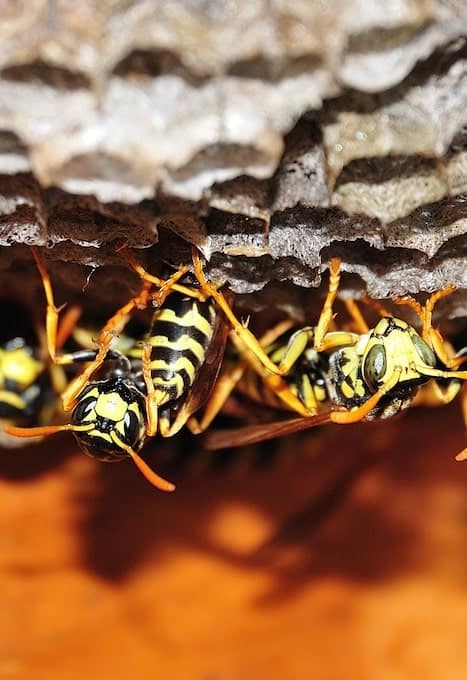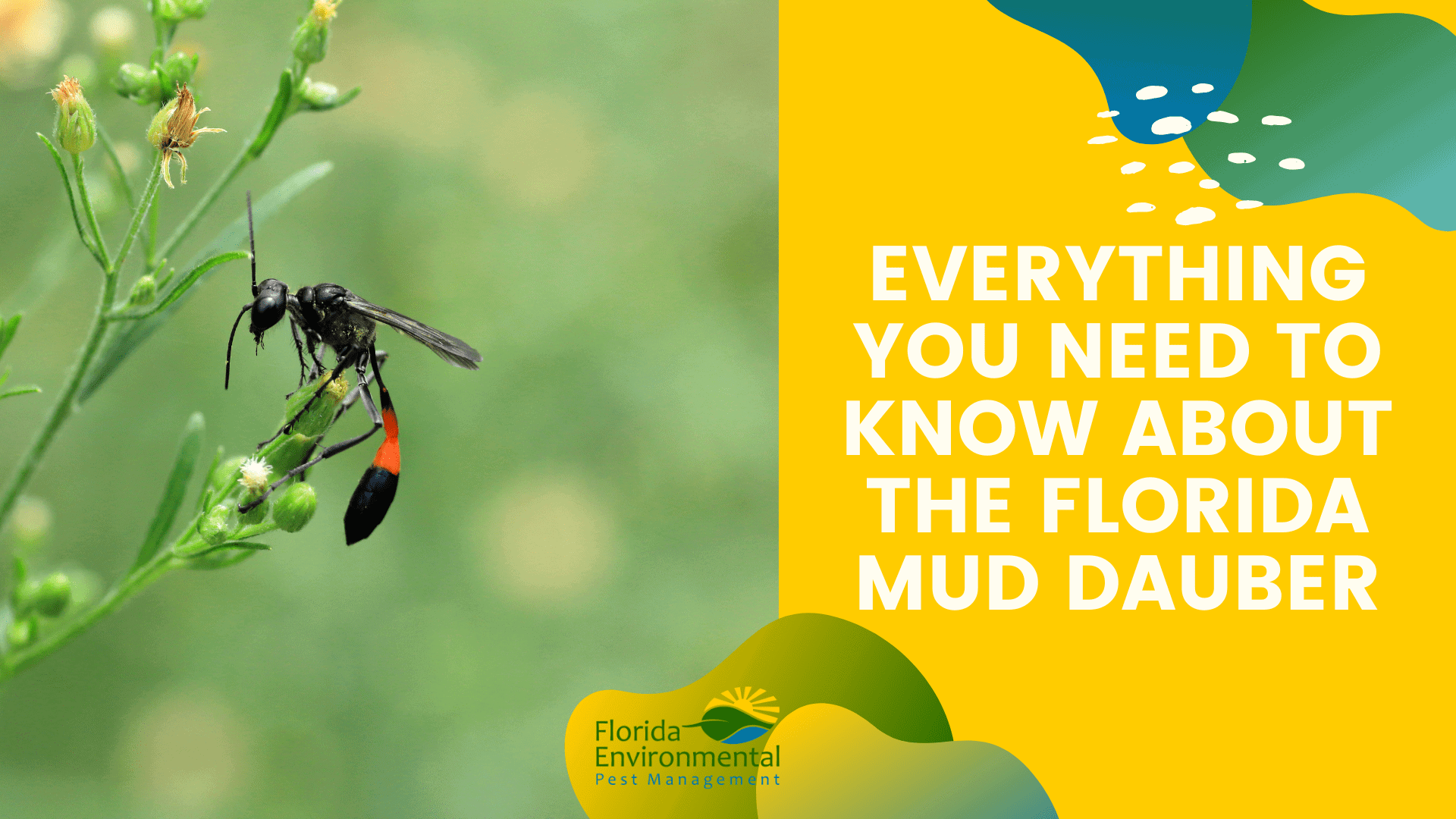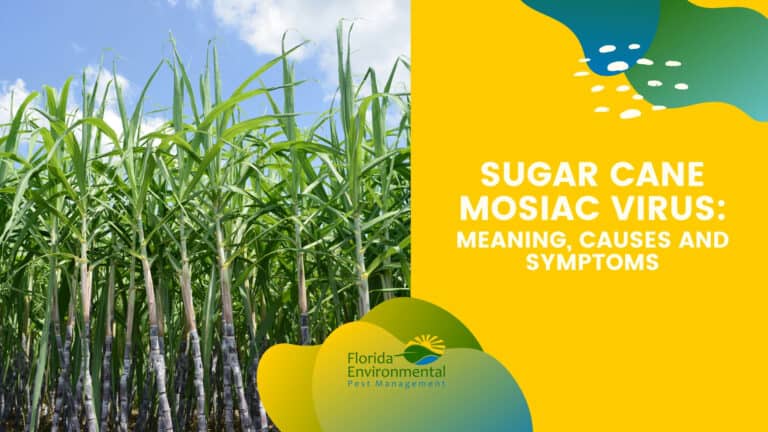The Florida Mud Dauber is a type of wasp that is commonly found in Florida. Although you may not have heard it called by this name, you may be familiar with their distinctive-looking nests, which are made out of mud. Mud daubers are creatures of habit and will return to the same areas year after year. In fact, their nests can often expand in size, making it hard not to notice their presence. Many homeowners prefer not to have any species of wasp make a home on their property, which is where professional pest control is helpful.
What Are Mud Daubers
Mud Daubers are solitary wasps, which means that they do not live in colonies and that there is only one wasp per nest, not including their eggs. Mud daubers are about an inch long and have long, thread-thin waists. They come in several color combinations but are usually black, yellow, or metallic blue. Mud daubers are predatory wasps that eat flower nectar and hunt a variety of insects and spiders including orb weavers, widow spiders, and crab spiders. Their nests are built by female wasps, which is where they lay their eggs and place their prey.

Different Types Of Mud Daubers
Mud Dauber is a descriptive name that can be applied to a few types of wasps who construct their homes from mud. Some wasps build nests that look like mud tubes while other species create nests in wall crevices that look like plasters. There are even mud dauber wasps that build vase-like nests on the stems of leafy plants. Here are a few different species of mud daubers:
- Black and yellow mud dauber
- Organ pipe mud dauber
- Blue mud wasp
Where Do Mud Daubers Live
Most mud daubers like to build their nests in secluded, sheltered areas that are high up, and of course, located near mud. Their nests can be found under eaves, porch ceilings, garages, and rafters. Gardens are also great mud dauber habitats, especially if they can build nests on nearby lawn furniture or other outdoor structures, such as gazebos and sheds. Some mud daubers build their hives on trees and plants but tend to prefer areas that are more protected from the elements. Mud daubers live in many states across the country, but thrive in Florida’s tropical climate and are active-year round thanks to the humid weather.
Healing From A Mud Dauber Sting
Mud daubers are not dangerous, but they will sting people if they feel threatened. They can deliver multiple stings like all species of wasps, which is a cause for concern if you are allergic to wasp venom. According to the Mayo Clinic, signs of an allergic reaction to a wasp sting can include vomiting, fever, dizziness, and fainting. If you get stung by a mud dauber, wash the area with soap and water, and then apply an ice pack to reduce pain and swelling. Their stings are considered mild, and should only take a few days to heal. If you develop hives or other signs of an allergic reaction, seek immediate medical treatment.

Pest Control And Mud Daubers
Although mud daubers are not aggressive wasps and don’t swarm, it’s always a good idea to leave nest removal to pest control professionals. DIY methods such as treating a nest with peppermint oil or other ideas you may find on the internet are not that effective in the long term. To get rid of mud dauber wasps for good, their nest sites will have to be sprayed with pesticides to prevent them from returning and building new nests.
How We Can Help You
As pest control specialists, we have years of experience handling all sorts of insects and pests, including mud dauber wasps. Although mud dauber wasps are considered beneficial because they help with other kinds of insect control, they can be a nuisance. Their nests can also be inhabited by other species of wasps, so you may not want to handle the nests yourself.
If you are noticing lots of mud nests or wasps in your home or property, contact us today. Wasp control requires professional extermination, nest removal, and treatment of the nest site to get rid of these pests for good.
Sources:
https://hgic.clemson.edu/factsheet/mud-daubers/
https://www.mayoclinic.org/diseases-conditions/bee-stings/symptoms-causes/syc-20353869
https://www.welllivingideas.com/11-natural-ways-to-get-rid-of-mud-daubers-and-their-nest/





